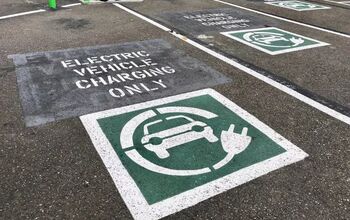Rocks in Your Tailpipe?
Does the future of going green mean packing gravel into the tailpipe of your car? Maybe. MIT’s Technology Review reports that Columbia University researchers have discovered that magnesium rich rock formations know as peridotite absorb carbon dioxide out of the atmosphere. The rock reacts with carbon-dioxide to create calcium carbonate and magnesium carbonate. The researchers optimistically predict, “that the carbon-sequestration rate in rock formations in Oman could be increased to billions of tons a year–more than the carbon emissions in the United States from coal-burning power plants, which come to 1.5 billion tons per year.” The rock is also found in California and New Guinea. Researchers believe that fracturing and heating the rock would increase its ability to trap large amounts of CO2. Right now, the researchers are only looking at large-scale commercial applications. But who knows, the time may come when a peridotite filter might find its way under your car.
More by William C Montgomery


































Comments
Join the conversation
CO2 is plant food. I like plants. Don't reduce the amount of CO2, and then make me pay for it, too. What a colossal waste.
Um...no. Mass balance: (2400 grams C / gallon)* (10 gal/tank )* (84 g/mol MgC03 / 12 g/mol C) = 168,000 g. So you're going to remove 168 kg of MgCO3 from your tailpipe after every 10-gallon tank? That's neglecting the weight of all the other crap that was part of the raw mineral. I think this is why they're going for industrial application only.
It's absolutely stupid ideas like this that are going to totally mess up the planet. Some ignorant assed wackos with a solution to a non existent problem. I think a MUCH better solution to the "abundance" of CO2 would be if all the enviro fanatics quit breathing... How much CO2 would that sequester? :)
sean362880 is correct - the CO2 is a combustion product of the carbon in the fuel and the oxygen in the air taken in by the engine; the resulting CO2 would need to be stored in a trailer full of "rocks" and purged quite often. It may find use if one could build a coal-fired power plant on top of a formation of the stuff, but any other 'economically feasible' use is unlikely.